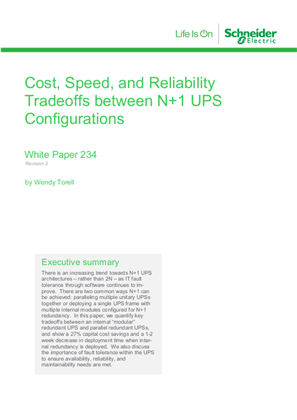
Cost, Speed, and Reliability Tradeoffs between N+1 UPS Configurations
There is an increasing trend towards N+1 UPS architectures – rather than 2N – as IT fault tolerance through software continues to improve. There are two common ways N+1 can be achieved: paralleling multiple unitary UPSs together or deploying a single UPS
Datum:
04 Januar 2017
|
Typ:
Whitepaper
Sprachen:
Englisch
|
Version:
V2
Bestellnummer:
SPD_VAVR-A84MRT_EN
Dateien
| Dateiname | ||
|
VAVR-A84MRT_R2_EN.pdf
|
|

